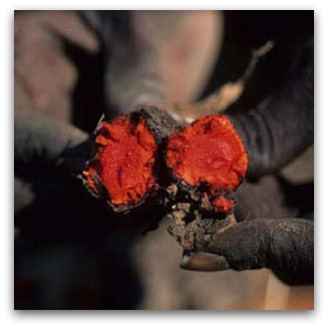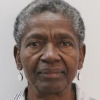 NAIDOC week is about celebrating Aboriginal people, their cultures, history and achievements. The 2010 theme is 'Unsung Heroes — Closing the Gap by Leading the Way'. According to the NAIDOC website, this theme 'asserts Indigenous ownership of 'closing the gap'', including the life expectancy difference and other 'gaps' between Indigenous and non-Indigenous Australians.
NAIDOC week is about celebrating Aboriginal people, their cultures, history and achievements. The 2010 theme is 'Unsung Heroes — Closing the Gap by Leading the Way'. According to the NAIDOC website, this theme 'asserts Indigenous ownership of 'closing the gap'', including the life expectancy difference and other 'gaps' between Indigenous and non-Indigenous Australians.
It's true that achievements are being made in the arts, sport, education, employment and other areas, some undoubtedly facilitated by 'unsung heroes' at local and regional levels. But as far as 'closing the gap' goes, the trends overall are not encouraging. Indeed, it is impossible to focus entirely on celebration when considering the conditions prevailing among Indigenous Australians.
Last week an ostensibly positive report emerged of a study by Access Economics, which examined the status of the Aboriginal population in the Goulburn Valley. Their modelling suggests closing the gap in life expectancy, education and workforce participation would result in everyone in the region being $2260 better off in 20 years.
The report notes that the 'outcomes are predicated on the many facets of Aboriginal disadvantage that contribute to their poorer health and labour market outcomes being addressed'. It suggests the exercise 'could facilitate discussion about how much governments can afford to spend to alleviate Indigenous disadvantage'.
So, governments could justify investing in closing the gap by pointing to projected longer-term economic benefits. But at this stage it is all highly speculative, and rejoicing would be premature.
Minister for Indigenous Affairs, Jenny Macklin, meanwhile, has attempted to put a positive construction on the fact that, in the Northern Territory, reports of child abuse and neglect have more than doubled since the Intervention began. Macklin attributed the increase in reports to a greater police presence in remote communities, and to better relations between police and Aboriginal people.
Aboriginal and Torres Strait Islander Social Justice Commissioner Mick Gooda concurred, but stressed the need for better support services for victims and for improvements in education and other areas — school attendance has not improved. On most measures, the Intervention offers little to applaud.
Minister Macklin has announced the extension of the income management scheme to non-Indigenous welfare recipients in the Northern Territory — dismissing questions raised by experts on its efficacy — having already extended it to selected areas outside the NT.
Many welfare recipients could benefit from assistance in managing their meagre incomes, but they remain poor, and eliminating poverty is not even a stated goal of the Intervention. There is no incontrovertible evidence that the benefits of the very costly, indiscriminate application of the scheme justify the loss of dignity and control many of its subjects experience, or that its lessons will be enduring and transferable.
While acknowledging that 'closing the gap' is an enormous task, I find it hard to rejoice in the achievements to date of government policies. I do know, however, some unsung heroes who will never be recognised, even during NAIDOC Week.
They include a young woman I've known since she was two years old; not yet 40, she, two of her sisters and her partner have renal failure. They must live in Perth, hundreds of kilometres from home, to receive dialysis. She is currently in hospital, recovering from spinal surgery, and therefore separated even from her city-based loved ones. Yet she is uncomplaining and greets me with a beaming smile whenever I visit.
Another dialysis patient, a senior woman, now confined to a wheelchair, takes an intense interest in her family and community, and worries about the preservation of her cultural heritage. She and other senior people, separated from their homes for years, often risk their health, even their lives, to return for meetings and funerals. Their family members make heroic efforts to visit them.
These people know little about 'closing the gap' policies; they are managing their illnesses and doing all they can to hold their families together.
Following Julia Gillard's assumption of the prime ministership, Commissioner Gooda, in his role as co-Chair of the Close the Gap Campaign, expressed hope that she would honour the commitment Labor made, while in opposition, to the Indigenous Health Equality Statement of Intent. 'Only a prime minister can bring the whole of government focus to closing the gap that is necessary to make progress,' Gooda said.
So far, the new Prime Minister has only mentioned the 'closing the gap' policy when praising her predecessor's achievements. She has not taken any public position on Indigenous affairs generally.
There may be goodwill, even genuine concern on the part of politicians, but the condition of Indigenous people's health and wellbeing is not among the issues that will make or break parties at the coming election. The Apology was politically expedient early in Kevin Rudd's time as prime minister, but to date action has not matched words.
Perhaps the Government will use the forecast regarding the Goulburn to sell the goal of closing the gap, and make Australians generally more enthusiastic about it. This is a flimsy hope: there is little sign that this is a priority for the Government. Regrettably, 'closing the gap' cannot muster the clout of the mining industry or the loud clamour for improved 'border security' that can galvanise governments and get rapid policy action.
 Dr Myrna Tonkinson is an honourary research fellow in anthropology in the School of Social and Cultural Studies at the University of Western Australia who has done research among Aboriginal people in the Western Desert of WA since 1974.
Dr Myrna Tonkinson is an honourary research fellow in anthropology in the School of Social and Cultural Studies at the University of Western Australia who has done research among Aboriginal people in the Western Desert of WA since 1974.